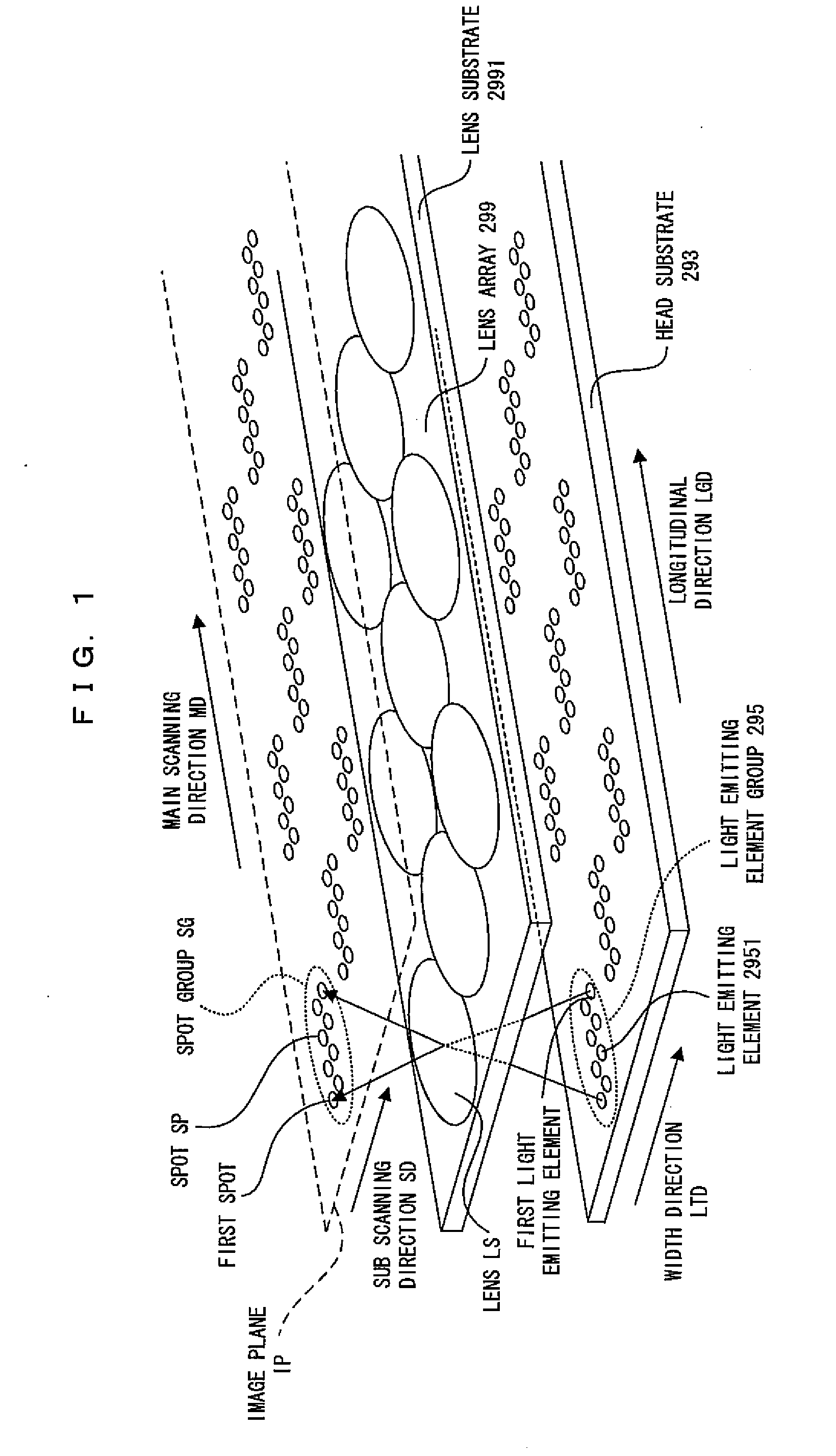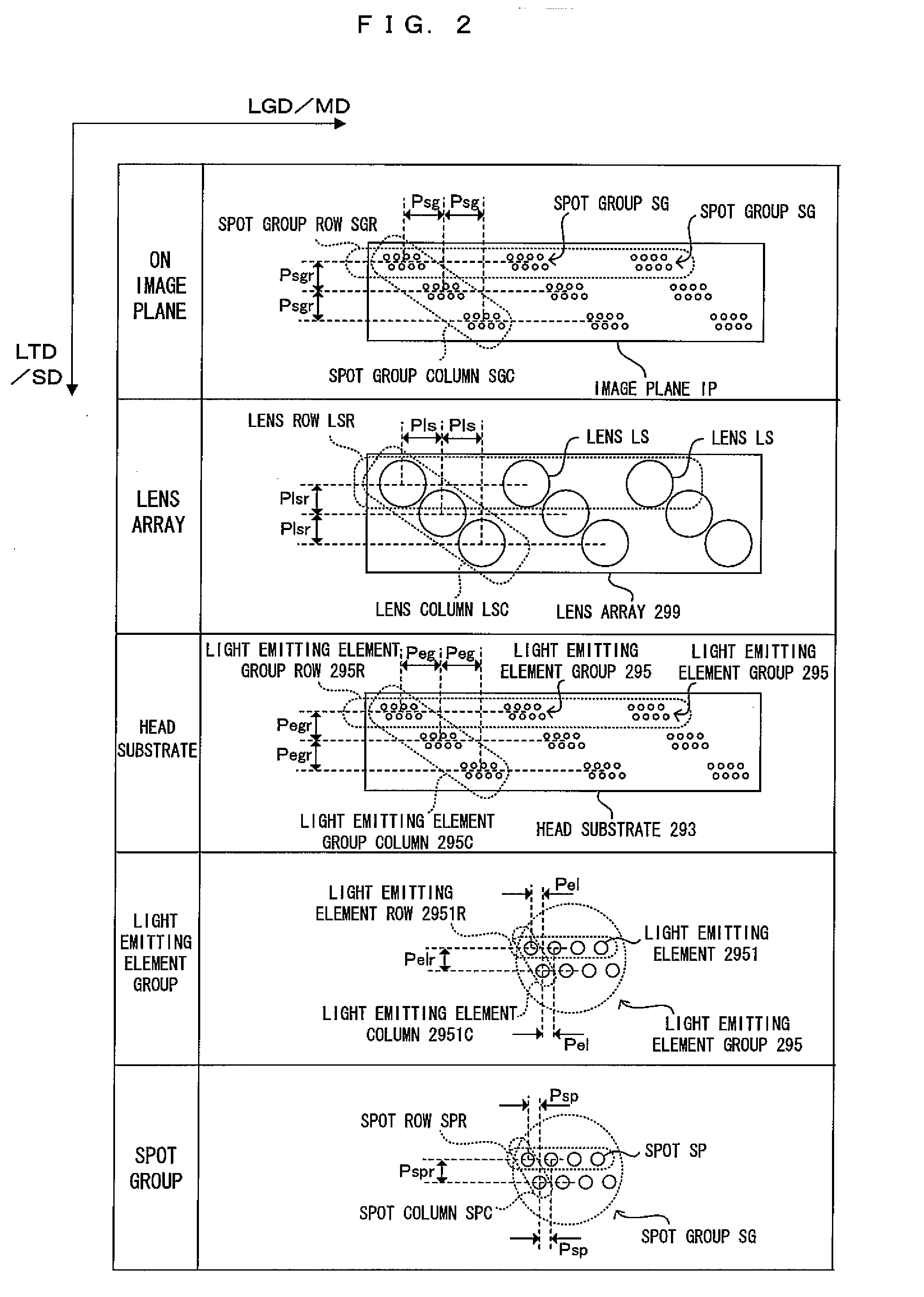Exposure Head and an Image Forming Apparatus
- Summary
- Abstract
- Description
- Claims
- Application Information
AI Technical Summary
Benefits of technology
Problems solved by technology
Method used
Image
Examples
first embodiment
B-1. First Embodiment
[0053]FIG. 3 is a diagram showing an embodiment of an image forming apparatus including a line head as an application subject of the invention. FIG. 4 is a diagram showing the electrical construction of the image forming apparatus of FIG. 3. This apparatus is an image forming apparatus that can selectively execute a color mode for forming a color image by superimposing four color toners of black (K), cyan (C), magenta (M) and yellow (Y) and a monochromatic mode for forming a monochromatic image using only black (K) toner. FIG. 3 is a diagram corresponding to the execution of the color mode. In this image forming apparatus, when an image formation command is given from an external apparatus such as a host computer to a main controller MC having a CPU and memories, the main controller MC feeds a control signal and the like to an engine controller EC and feeds video data VD corresponding to the image formation command to a head controller HC. This head controller H...
second embodiment
B-2. Second Embodiment
[0097]FIG. 13 is a schematic perspective view of a line head according to a second embodiment. FIG. 14 is a plan view of a lens array according to the second embodiment and corresponds to a case where the lens array is seen from the image plane side (that is, from the light beam propagation direction Doa). In FIG. 14, the respective lenses LS are provided on the under surface 2991-t of the lens array substrate 2991. The structure of the under surface 2991-t of the lens array substrate is shown in FIG. 14. In addition, while FIG. 14 shows light emitting element groups 295, this is merely to show how the light emitting element groups 295 correspond to the lenses LS without any intention to mean that the light emitting element groups 295 are provided on the under surface 2991-t of the lens array substrate. In the following, differences of the second embodiment from the first embodiment will be mainly described. Common aspects will be denoted at corresponding refer...
third embodiment
B-3. Third Embodiment
[0102]By the way, in the structure shown in FIG. 14, the lenses LS-u (a first lens and a second lens) are connected with the lenses LS-m (a third lens) so that it is possible for the lenses to receive a large amount of light without widening the gaps between the lenses LS-u and the lenses LS-m. Further, the lenses LS-m (a first lens and a second lens) are connected with the lenses LS-d (a third lens) so that it is possible for the lenses to receive a large amount of light without widening the gaps between the lenses LS-m and the lenses LS-d. In other words, the structure shown in FIG. 14 is capable of reducing the width of the lens array 299 in the width direction LTD (second direction). As a result, it is also possible to reduce in the width direction LTD the area on the head substrate 293 where the light emitting elements 2951 corresponding to the respective lenses LS are arranged. It is therefore possible to secure extra spaces at the both sides of the head s...
PUM
 Login to View More
Login to View More Abstract
Description
Claims
Application Information
 Login to View More
Login to View More - R&D
- Intellectual Property
- Life Sciences
- Materials
- Tech Scout
- Unparalleled Data Quality
- Higher Quality Content
- 60% Fewer Hallucinations
Browse by: Latest US Patents, China's latest patents, Technical Efficacy Thesaurus, Application Domain, Technology Topic, Popular Technical Reports.
© 2025 PatSnap. All rights reserved.Legal|Privacy policy|Modern Slavery Act Transparency Statement|Sitemap|About US| Contact US: help@patsnap.com



